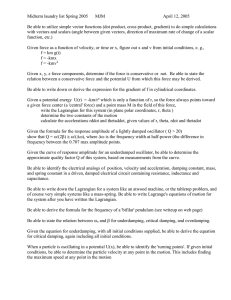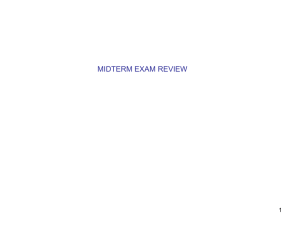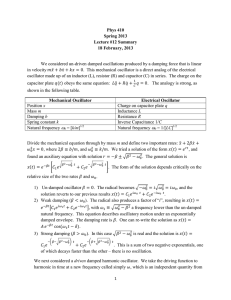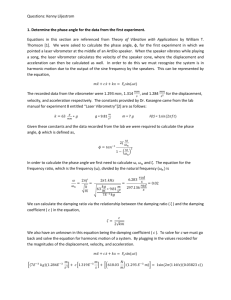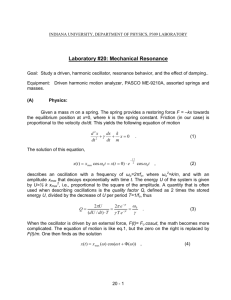PHY 3221 Classical Mechanics, Homework #6, due 8:30 am, 03/19/12 1 (
advertisement
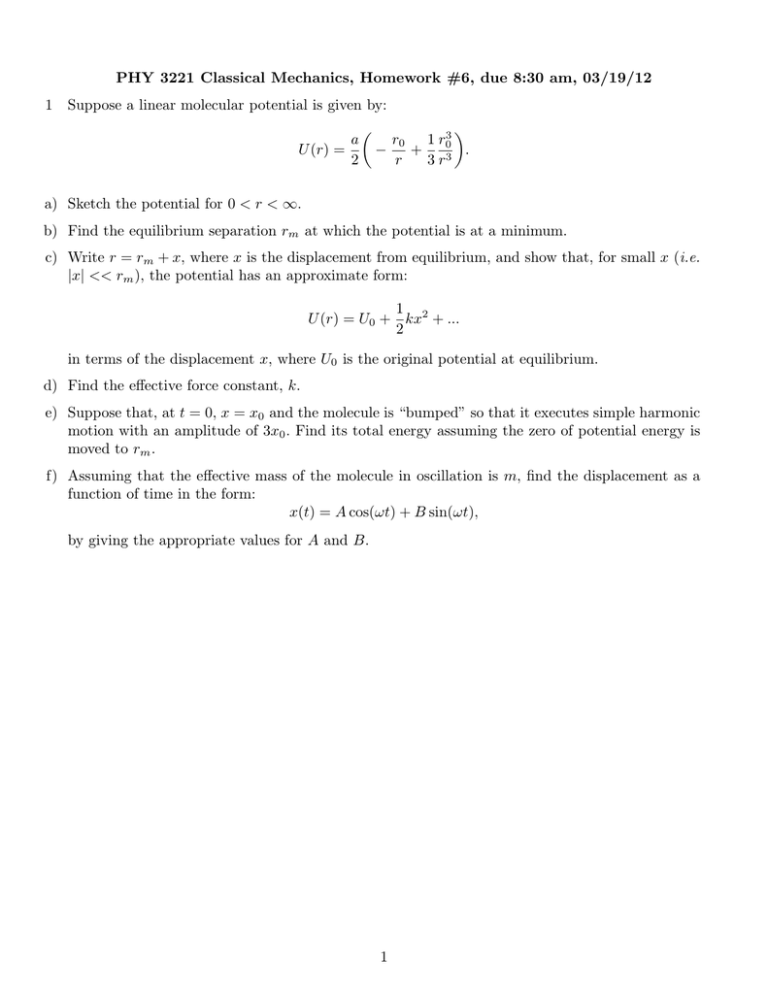
PHY 3221 Classical Mechanics, Homework #6, due 8:30 am, 03/19/12 1 Suppose a linear molecular potential is given by: a U (r) = 2 ( ) r0 1 r03 − + . r 3 r3 a) Sketch the potential for 0 < r < ∞. b) Find the equilibrium separation rm at which the potential is at a minimum. c) Write r = rm + x, where x is the displacement from equilibrium, and show that, for small x (i.e. |x| << rm ), the potential has an approximate form: 1 U (r) = U0 + kx2 + ... 2 in terms of the displacement x, where U0 is the original potential at equilibrium. d) Find the effective force constant, k. e) Suppose that, at t = 0, x = x0 and the molecule is “bumped” so that it executes simple harmonic motion with an amplitude of 3x0 . Find its total energy assuming the zero of potential energy is moved to rm . f) Assuming that the effective mass of the molecule in oscillation is m, find the displacement as a function of time in the form: x(t) = A cos(ωt) + B sin(ωt), by giving the appropriate values for A and B. 1 2 Consider an free oscillator with a damping force, Fdmp = −bẋ. a) By using the equation of motion, find the time rate of change of: E= 1 2 1 kx + mv 2 . 2 2 b) Relate this to the power dissipated by the damping force, Fdmp . c) Without the damping force, the oscillator has a period of 3.000sec. With the damping force, its period becomes 3.002sec. What is the damping time (the inverse of the damping factor, β)? d) By what factor will the amplitude decrease after 20 cycles? e) Which would be more noticeable; the change in amplitude or the change in the oscillation frequency? Carefully explain your answer. 2 3 Consider a particle governed by a critically damped oscillator. a) Write out the general solution for the position of the particle, assuming there is no driving force. b) Suppose that, at t = 0, x = x0 . Find one of the unknown constants in your general solution. c) Suppose that the oscillator later goes through a minimum at which the displacement of the particle is xmin = −x0 exp(−2). Find an expression for the time at which the minimum occurred, and eliminate another of the unknown constants in your general solution. (Hint: you should be left with just β.) d) Find the time at which the particle’s motion went through zero. 3




